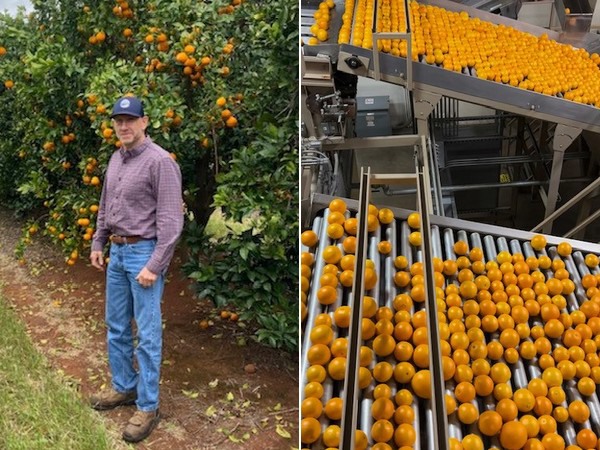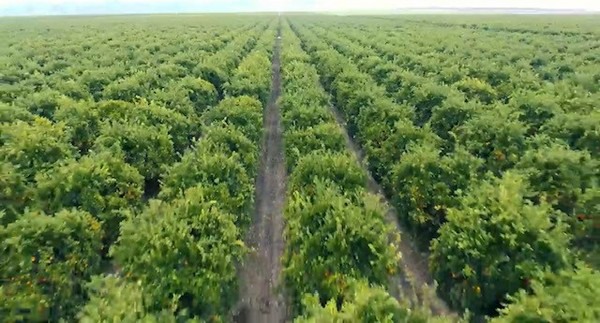California is moving deeper into the second lightest recorded crop of Valencia oranges in its history. The state estimate for the citrus fruit is 16.2 million cartons this season--that follows the lightest recorded crop of 15.4 million cartons in 2021. Compare that to 1997’s crop for example which was as high as 48 million cartons.
 While Valencia acreage has continued to reduce in California, Al Bates says it’s well suited to the demand that’s currently out there.
While Valencia acreage has continued to reduce in California, Al Bates says it’s well suited to the demand that’s currently out there.
“It’s an exponential decline over the last 25 years and that pretty much goes along with the acreage in Valencias dropping in California,” says Al Bates, president of Sun Pacific Shippers. “It’s dropped significantly from 76,000 acres in 1997 to 25,000 acres now.”
While the Coachella Valley has been in production since February with more minimal acreage, the majority of the shipments are coming from the San Joaquin Valley which began in May. “However that’s subject to what’s going on in the navel market. If that market goes long, then Valencias are slower to start,” says Bates, adding that peak California Valencia shipments are July-October. In fact, California navel shipments are just finishing up now--later than last year at this time--so Valencia shipments should start picking up by the end of July. That’s also the period when more contracts with retailers and other customers on Valencias kick in.
The California season also runs accordingly with Southern Hemisphere imports which are now bringing in navel oranges. Those imports move to Valencias starting in late fall which is the tail end of the California Valencia season.
Supply and demand
So while the acreage has continued to reduce in California Valencia oranges, Bates says it’s well suited to the demand that’s currently out there, though he notes that there’ll likely continue to be a gradual reduction in acreage, particularly in Southern California with the water issues ahead. “Growers will take out acreage and have to identify which of their commodities generate the lowest return and that’s what they’ll be pulling out. It should continue to go down but not at the exponential rate that it has in the last 25 years,” Bates says.
 The state estimate for the Valencias is 16.2 million cartons this season.
The state estimate for the Valencias is 16.2 million cartons this season.
Helping support the demand for Valencias this year particularly is a strong orange juice futures market, one that began to pick up as of 2020. “It’s stabilized now but it’s more than double the price of what it was a few years ago. That’s really been a big help in supporting the bottom line of growers,” says Bates, noting that while California Valencias are largely grown for the fresh market, approximately 1/3 of the crop goes towards the juice business.
As for pricing currently, it’s not as strong as hoped for though once more sizeable shipments get going in July, it should likely pick up. “Along with the light crop, the size structure is also probably the smallest on record in the last 12 years. Projected diameters are much smaller than the 10-year average for the industry,” says Bates. “That’s not a problem. Navel oranges you want to have big sizes and Valencias you want medium-smaller sizes so for the balance of the season, we’ll be in the right size structure.”
 For more information:
For more information:
Al Bates
Sun Pacific Shippers
Tel: +1 (213) 612-9957
https://sunpacific.com/
